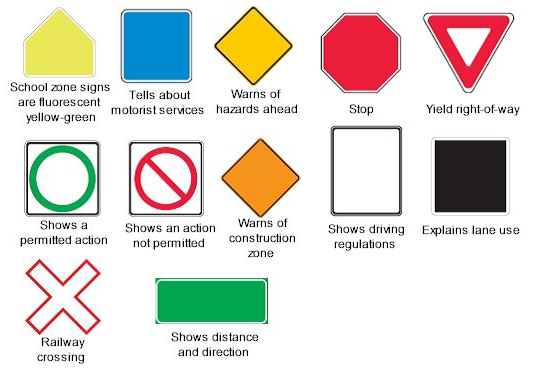


Teaching Techniques
Following is a classic example of what we teach you during driving lessons:-
- Introduction to the car – correct adjustments of seat, mirrors, head restraint. Explanation of switches and controls.
- Steering and lane positioning, rules of the road, signs, lines, right-of-ways, corners, curves, tips for handling larger vehicles — all emphasizing the correct seeing techniques which make learning quick and effective.
- Moving with other traffic, correct lane choice, right and left turns at traffic lights, use of mirrors, understanding blind spots so you understand what a “shoulder check” really is.
- Defensive Driving – Proven methods to keep you out of accidents. “Reading” the traffic scene, managing space, strategic positioning, escape routes, planning, pacing, timing, communicating, interacting with other traffic and pedestrians.. (You don’t just want your N – you want to be able to take care of yourself.)
- Maneuvering skills – Stall parking, parallel parking, backing your vehicle, uphill and downhill parking.
- Highway driving – Lane choice, managing space, head-on crash avoidance. Entering and exiting freeways, strategies for higher speed driving.
- Preparation for the Road Test – A review of all skills and maneuvers needed to pass the Road Test. Car for the test available on an hourly or package basis.
How to begin
Arrangements are made by emailing or telephoning, and booking appointments for the first lesson or group of lessons.
The student is picked up from home, school or work, and the lesson begins when the student gets into the car. That is, pickup or travel time is not included in lesson time — each lesson is a full sixty minutes, though more than an hour can be scheduled. Further lessons will be scheduled based on the student’s progress and availability.
We recommend . . .
When a potential student is thinking of doing a package, we normally recommend scheduling the first lesson or two right away, even if the test date will be many months ahead.
This helps students to practice important fundamentals all the way through their driving experience. Some students find that these fundamentals can’t quickly or easily be added a short time before their test. “Shoulder checking,” which ICBC stresses, is one obvious example.
To learn more about our teaching techniques, click here to Contact Us now.

